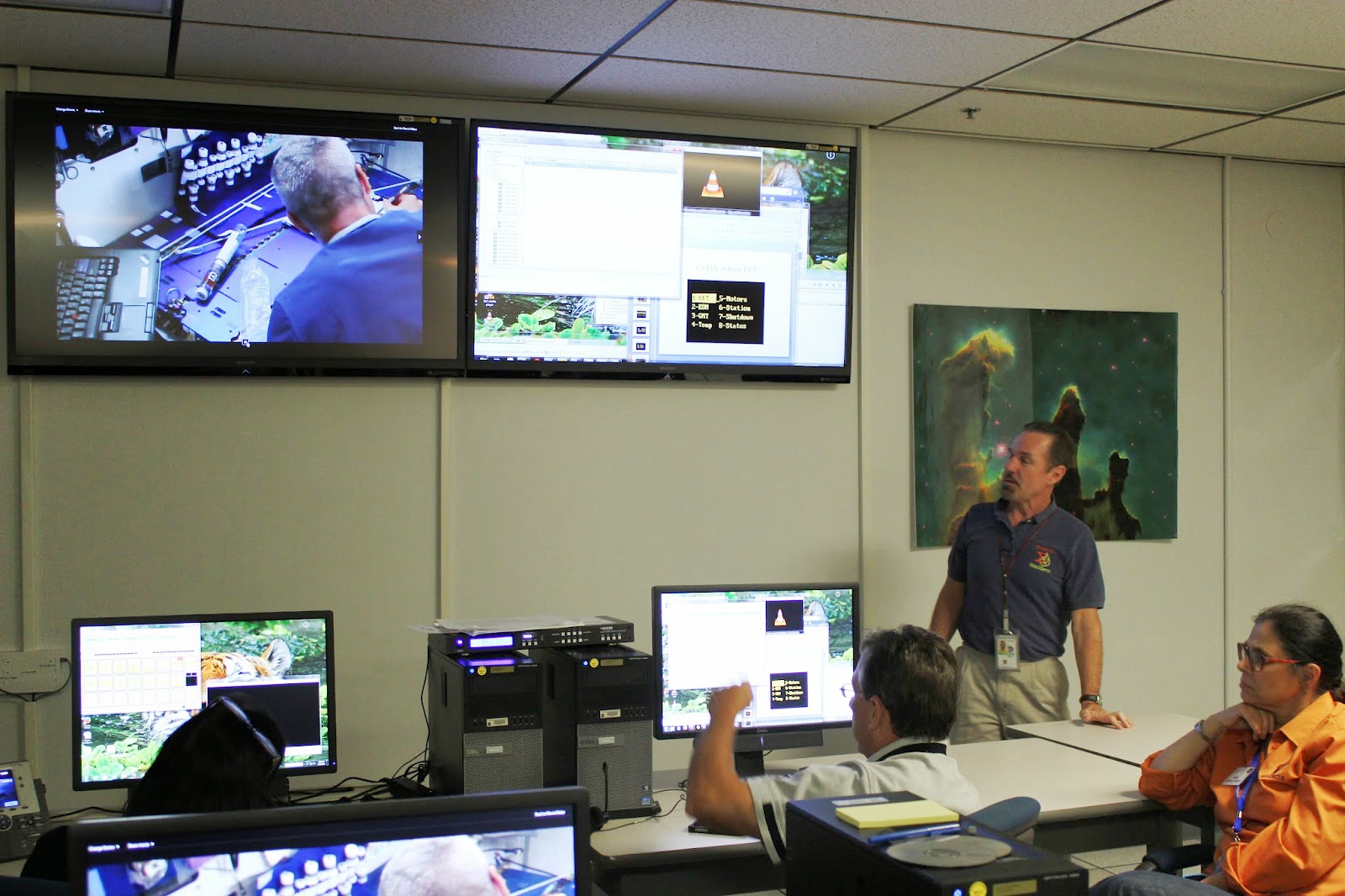Today was our final investigation of our space microbes, we learned about VEGGIE on the ISS, and then got to have lunch and hangout with the scientists.
NASA Space Microbes Invasion (Day 5 of 5)
OBJECTIVE: To investigate how different cleaning agents sanitize an assortment of vegetables and fruits for consumption on board the ISS.
Over the past 5 days, watching the microbes grow - we observed that the onion had no growth. We determined that the onion does not have microbes and that the lettuce is low microbial. The reason why the lettuce may have exhibited so much growth is because it had been handled and processed in factory. However, if the lettuce was grown in a controlled environment, the microbial growth would be significantly less. The vinegar seems to have been a good way to clean the vegetables, but not good enough.
VEGGIE Overview – Gioia
Meeting Gioia was quite awesome. She was extremely smart and - well, really....beyond words. She told us about a current plant growth system that is in place on the ISS. Our microbes experiment was based around VEGGIE. It is important when trying to grow plants in space, that they are low microbial plants because the only microbes currently in space are from the astronauts. Below is a link to a website, which provides a bit more information on VEGGIE. Also, a picture of Gioia.
http://www.nasa.gov/content/veggie-plant-growth-system-activated-on-international-space-station/
Trent came back to hang out and showed us one of his patents.
We also met and got to know other scientists that are involved with VEGGIE. Once again, I am so thankful for this experience and hope that I can do more with NASA, all while introducing such a wonderful subject to my students.
Lunch and Hangout with a Scientist






























































